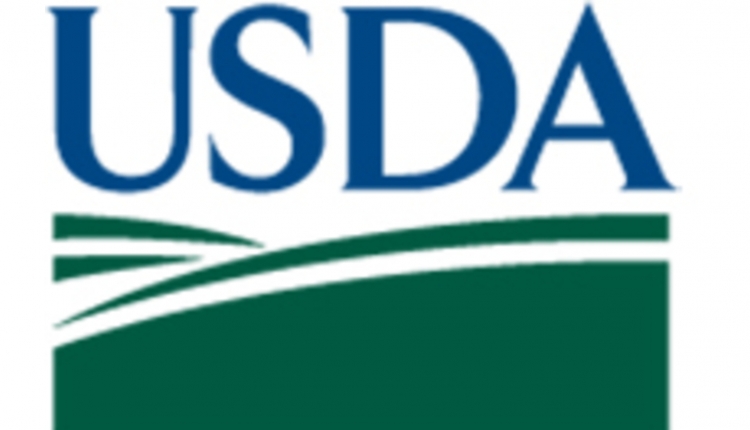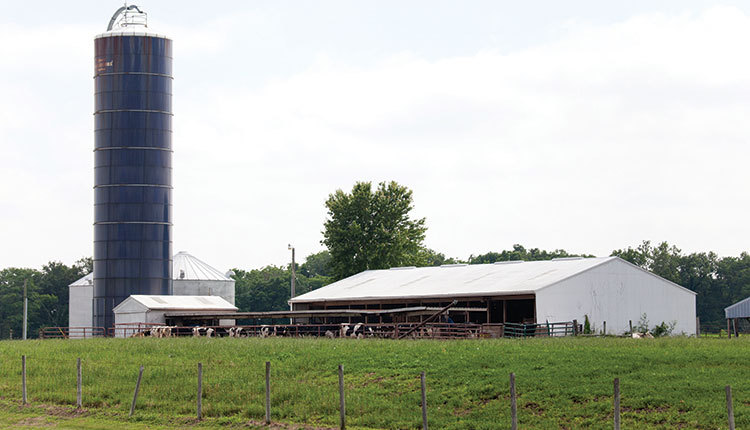The author is a dairy nutrition consultant for Central Connecticut Cooperative Farmers, who previously managed large dairies in California and Hawaii.

As commodity prices continue their ascent, evaluate whether your herd's production level can offset the cost of another pound of soy or corn.

This article appears on page 599 of the September 25, 2012 issue of Hoard's Dairyman.

Feeding cows is the single largest expense on a dairy farm, accounting for 50 percent or more of total outlays. Since 2007, feed costs have risen significantly after many years of commodity prices remaining relatively flat. The lion's share of skyrocketing feed costs can be attributed directly to grain, commodity by-product, and co-product prices.
As this is written in August, a drought of epic proportions is damaging or destroying a significant percentage of the U.S. corn and soybean crops. Both crops are the bellwethers for commodity pricing and trends. Where they go sets the rest of the commodity markets.
Price escalation begins in 2007
The graph shows how both commodities have taken big jumps starting around 2007. The price of corn more than tripled while soybeans more than doubled by mid-2012. It caused feed ingredients in dairy cow diets to spike over $100 per ton for finished feeds in less than a year's time.
For many years, the USDA has tracked and calculated an index called the "Milk-Feed Price Ratio." This ratio consists of the price of a pound of milk divided by the price of a 16 percent protein feed ration. Historically, when the ratio ranges from 2.5:1 or greater, dairy farmers tend to have a greater financial incentive to purchase feeds and produce milk.
For example, when the price of milk is 16 cents per pound ($16 per hundredweight) and the ration price is 6 cents per pound ($120 per ton), the Milk-Feed Price Ratio would be 2.67:1. If the price of the ration doubles and the price of milk remains the same, the ratio drops to 1.33:1.
As the price of a pound of feed approaches the same number as a pound of milk, it becomes more difficult for dairy farms to remain profitable. That's the situation that the dairy industry finds itself in. The ratio has not been above 2:1 since April 2011.
Milk-Feed is almost even
In many parts of the country, in mid-2012 the cost to feed a cow producing 65 pounds of milk has surpassed $8 per day. The cost per pound of dry matter, when consumption ranges between 45 and 50 pounds, then runs between 16 and 17.7 cents. Milk prices across the country on a 3.5 percent level of butterfat will most likely not average $18 per hundredweight for 2012.
Just to get the ratio back to at least 2:1, the milk price would have to ascend to over $30 per hundredweight if feed prices remain this high!
In the Northeast U.S., purchased feed costs have elevated $1.50 per hundredweight of milk over the past five years, and farming costs have risen about 17 cents per hundredweight. Dairy farmers are continually faced with the challenge of determining how much more they can pay for feed. To compensate for those production cost surges in the midst of volatile milk pricing, farmers, for the most part, must hike the production of milk and milk components per cow, improve feeding efficiencies, or milk more cows.
One of the unique aspects of the U.S. dairy industry is the diversity of how farms are operated and how farmers have resiliently adapted to adverse economic conditions over the decades. And while our industry continues to gravitate towards larger dairy herds that result in improved economies of scale, one can only wonder how many more cost spikes can be absorbed as all costs of production - not just feed - continue to climb while milk prices change little.

Income over feed a moving target
Averages are just averages. Statistically, there's always a deviation from the average (mean) with any data set which indicates that not every single producer has similar costs. While one producer may be spending $8 per day to feed cows, there's going to be another who's feeding cows for only $6 - and still manage to keep the net income-over-feed-cost (IOFC) at an acceptable level.
Maintaining a desirable IOFC is a continually moving target for dairies. Revenue per cow is a combination of milk price and milk production and components. The IOFC is the difference between milk revenue and feed cost, and the higher that value is the more money a dairy farmer has left after feed costs are paid. The worst-case scenario for IOFC, of course, is when the milk price plummets and feed costs soar. Improving IOFC almost always requires improving feeding efficiencies - getting more milk for the same amount of dry matter consumption or lowering dry matter consumption without losing milk production.
Now that corn and soybeans are in the process of hitting record highs, more attention is being focused on high-quality forages in dairy diets. Dairy farmers who have access to grass or legume forages with low neutral detergent fiber (NDF) levels can partially offset high grain costs and improve IOFC if these forage costs remain stable. Herd averages of over 22,000 pounds of milk are possible even while feeding rations containing 60 percent forage levels.
Every dairy farmer must find that "sweet spot"; where the maximum IOFC is for their dairy operation. The dairy industry has spent many years focusing on making more milk per cow, and that was a good model to follow when feed prices were moderate. But as soybean meal reaches $500 per ton and canola reaches $400 per ton and the price of milk struggles to make it to $20 per hundredweight, the law of diminishing returns begins to set in. That next pound of soy or canola in a high-cow ration may not result in the milk production to justify the cost. Dairy farmers must make good use of tools such as ration balancing models that can accurately predict what the next marginal pound of milk will cost and be willing to accept alternatives. It may be that scaling back a little bit on grains and commodities and doing a better job of utilizing forages may be more profitable in the future.
This article appears on page 599 of the September 25, 2012 issue of Hoard's Dairyman.











